When people ask me where I get ideas for my novels, I tell them it’s pretty easy—history is already full of fascinating characters and dramatic events. Margaret Culkin Banning said it well:
“Fiction is not a dream, nor is it guesswork. It is imagining based on facts, and the facts must be accurate or the work of imagining will not stand up.”
Historical fiction is based on facts--and that includes people who lived during the time period. Today I’d like to share with you five real people who inspired my upcoming Civil War novel, Wedded to War. I want you to fall in love with my fictional characters, but I also hope you will grow to respect the real people in the novel, as well. I am convinced that each of them felt ordinary, like you and me, but they did extraordinary things and should be remembered for them.
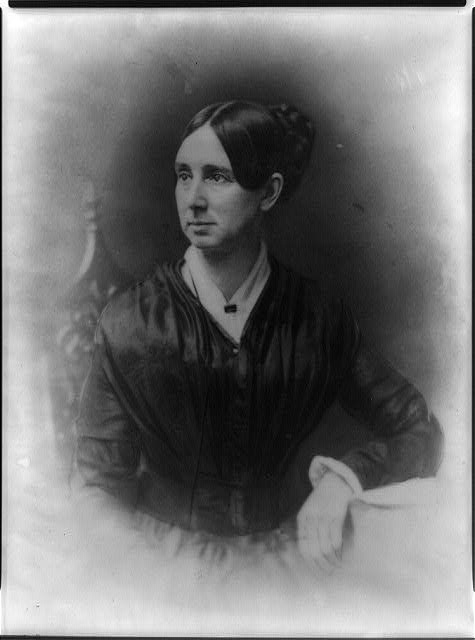 1) Dorothea Dix. Social reformer Dorothea Dix went straight to Washington within a week of war breaking out and didn’t leave until she had a meeting with President Lincoln himself. Her goal: for the government to allow women to be nurses. It was a shocking suggestion, for nurses in hospitals up until that time had all been male. Proper Victorian women could not be expected to touch a strange man’s body, even if he was sick or wounded—or so society believed. Yet the numbers alone were enough to convince Lincoln he needed help. At the start of the war, the U.S. Army Medical Department had a total of 28 surgeons, and no general hospital. Lincoln gave permission, and made Dix the Superintendent of Female Nurses. She had the authority to provide nurses to the army, and she wanted to be taken seriously. So her requirements for women nurses were stringent: they must be married, at least 30 years of age, of good health and character. They must not wear hoops under their skirts, ruffles, bows or jewelry. She was even known for turning away women because they were not homely enough. (Pretty women were accused of bringing out the men’s “natural desires.”) Even so, Dix was bombarded with applicants. Readers of Wedded to War will meet Dorothea Dix, or “Dragon Dix” as she was commonly called, in the novel.
1) Dorothea Dix. Social reformer Dorothea Dix went straight to Washington within a week of war breaking out and didn’t leave until she had a meeting with President Lincoln himself. Her goal: for the government to allow women to be nurses. It was a shocking suggestion, for nurses in hospitals up until that time had all been male. Proper Victorian women could not be expected to touch a strange man’s body, even if he was sick or wounded—or so society believed. Yet the numbers alone were enough to convince Lincoln he needed help. At the start of the war, the U.S. Army Medical Department had a total of 28 surgeons, and no general hospital. Lincoln gave permission, and made Dix the Superintendent of Female Nurses. She had the authority to provide nurses to the army, and she wanted to be taken seriously. So her requirements for women nurses were stringent: they must be married, at least 30 years of age, of good health and character. They must not wear hoops under their skirts, ruffles, bows or jewelry. She was even known for turning away women because they were not homely enough. (Pretty women were accused of bringing out the men’s “natural desires.”) Even so, Dix was bombarded with applicants. Readers of Wedded to War will meet Dorothea Dix, or “Dragon Dix” as she was commonly called, in the novel.
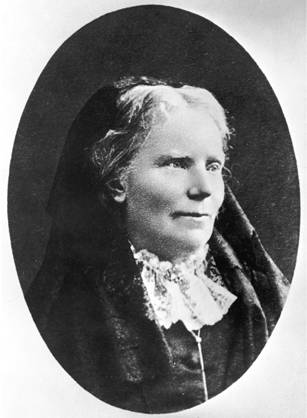 2) Dr. Elizabeth Blackwell. An English immigrant, Dr. Blackwell was the first woman to earn a medical degree in the United States, and ran an infirmary for women and children near the slums of New York City. When the Civil War broke out, she realized the Union army needed a system for distributing supplies and organized four thousand women into the Women’s Central Association of Relief (WCAR). The WCAR grew into chapters around the county, and this body systematically collected and distributed life-saving supplies such as bandages, blankets, food, clothing and medical supplies. Blackwell also partnered with several prominent male physicians in New York City to offer a one-month training course for 100 women who wanted to be nurses for the army. This was the first formal training for women nurses in the country. Once they completed their training, they were sent to Dix for placement at a hospital. By July 1861, the WCAR prompted the government to form a national version—the United States Sanitary Commission. And it all started because Dr. Blackwell decided to mobilize the women of the country to help the Union. Dr. Blackwell plays a major role in Wedded to War.
2) Dr. Elizabeth Blackwell. An English immigrant, Dr. Blackwell was the first woman to earn a medical degree in the United States, and ran an infirmary for women and children near the slums of New York City. When the Civil War broke out, she realized the Union army needed a system for distributing supplies and organized four thousand women into the Women’s Central Association of Relief (WCAR). The WCAR grew into chapters around the county, and this body systematically collected and distributed life-saving supplies such as bandages, blankets, food, clothing and medical supplies. Blackwell also partnered with several prominent male physicians in New York City to offer a one-month training course for 100 women who wanted to be nurses for the army. This was the first formal training for women nurses in the country. Once they completed their training, they were sent to Dix for placement at a hospital. By July 1861, the WCAR prompted the government to form a national version—the United States Sanitary Commission. And it all started because Dr. Blackwell decided to mobilize the women of the country to help the Union. Dr. Blackwell plays a major role in Wedded to War.
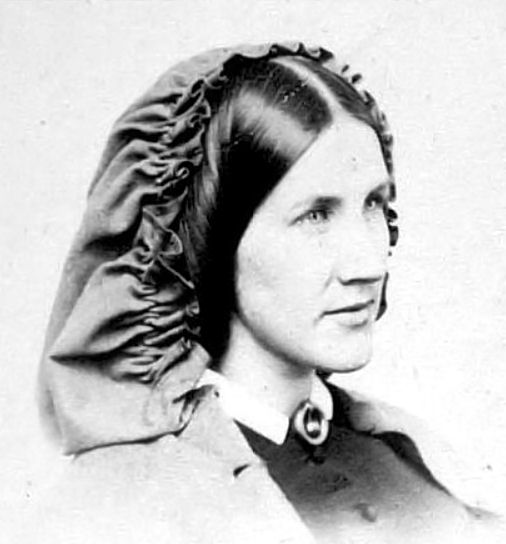 3) Georgeanna Woolsey. At 28 years old, Georgeanna should not have been allowed to serve the army as a nurse, but she got through the application process anyway. Against her mother’s and sisters’ wishes, she was one of the 100 women trained in New York City to be a nurse. Not content to sit in a parlor and knit or scrape lint, she was eager to go where the fighting was, to get her hands dirty in a way she had never been allowed to before as a wealthy, privileged woman. Georgeanna wrote many letters and accounts of her experiences, including this:
3) Georgeanna Woolsey. At 28 years old, Georgeanna should not have been allowed to serve the army as a nurse, but she got through the application process anyway. Against her mother’s and sisters’ wishes, she was one of the 100 women trained in New York City to be a nurse. Not content to sit in a parlor and knit or scrape lint, she was eager to go where the fighting was, to get her hands dirty in a way she had never been allowed to before as a wealthy, privileged woman. Georgeanna wrote many letters and accounts of her experiences, including this:
Some of the bravest women I have ever known were among this first company of army nurses. . . . Some of them were women of the truest refinement and culture; and day after day they quietly and patiently worked, doing, by order of the surgeon, things which not one of those gentlemen would have dared to ask of a woman whose male relative stood able and ready to defend her and report him. I have seen small white hands scrubbing floors, washing windows, and performing all menial offices. I have known women, delicately cared for at home, half fed in hospitals, hard worked day and night, and given, when sleep must be had, a wretched closet just large enough for a camp bed to stand in. I have known surgeons who purposely and ingeniously arranged these inconveniences with the avowed intention of driving away all women from their hospitals.
These annoyances could not have been endured by the nurses but for the knowledge that they were pioneers, who were, if possible, to gain standing ground for others. . .
Georgeanna Woolsey is the inspiration for my main character in Wedded to War, Charlotte Waverly. Georgeanna’s sister Eliza inspired the fictional sister Alice, as well.
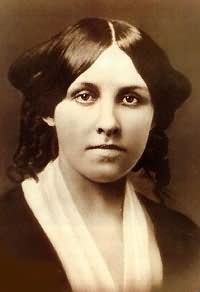 4) Louisa May Alcott. Before she wrote Little Women, Louisa May Alcott was a nurse at the Union Hotel Hospital in Georgetown for six weeks before she contracted typhoid fever and had to return to her home in Concord. Her book Hospital Sketches is full of vivid descriptions of hospital life, from her own duties to the personalities and sufferings of her patients. Louisa arrived in Washington too late for her to fit the timeline of Wedded to War, but her account of the horrific hotel-turned-hospital—which matched the Sanitary Commission report—helped me color my own descriptions of the Union Hotel Hospital. My main character Charlotte finds herself there in the summer of 1861 and quickly learns what it really means to be a nurse in the Civil War.
4) Louisa May Alcott. Before she wrote Little Women, Louisa May Alcott was a nurse at the Union Hotel Hospital in Georgetown for six weeks before she contracted typhoid fever and had to return to her home in Concord. Her book Hospital Sketches is full of vivid descriptions of hospital life, from her own duties to the personalities and sufferings of her patients. Louisa arrived in Washington too late for her to fit the timeline of Wedded to War, but her account of the horrific hotel-turned-hospital—which matched the Sanitary Commission report—helped me color my own descriptions of the Union Hotel Hospital. My main character Charlotte finds herself there in the summer of 1861 and quickly learns what it really means to be a nurse in the Civil War.
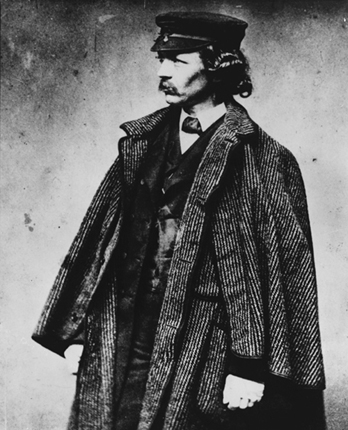 5) Frederick Law Olmsted. Most people know him as the landscape architect of New York City’s Central Park, which opened just a few years before the war began, or as the founder of modern landscape architecture. But he also played a critical role as the executive secretary of the U.S. Sanitary Commission from 1861 until he burned out from the job in 1863. He was a master administrator, and did untold good for the Union army by inspecting hospital camps and suggesting life-saving improvements in their hygiene, sanitation, cooking, and general care. Olmsted also helped form the fleet of hospital transport ships that removed sick and wounded Union soldiers from the swamps of Virginia during General George B. McClellan’s ill-fated Peninsula Campaign during the summer of 1862. (For more on the hospital transport’s service, read The Other Side of War by Katharine Prescott Wormeley and Hospital Transports, published by the Sanitary Commission in 1863 and available to read in full for free at http://books.google.com.) Frederick Law Olmsted is a character in Wedded to War, interacting with Charlotte Waverly both in Washington and on the hospital transports.
5) Frederick Law Olmsted. Most people know him as the landscape architect of New York City’s Central Park, which opened just a few years before the war began, or as the founder of modern landscape architecture. But he also played a critical role as the executive secretary of the U.S. Sanitary Commission from 1861 until he burned out from the job in 1863. He was a master administrator, and did untold good for the Union army by inspecting hospital camps and suggesting life-saving improvements in their hygiene, sanitation, cooking, and general care. Olmsted also helped form the fleet of hospital transport ships that removed sick and wounded Union soldiers from the swamps of Virginia during General George B. McClellan’s ill-fated Peninsula Campaign during the summer of 1862. (For more on the hospital transport’s service, read The Other Side of War by Katharine Prescott Wormeley and Hospital Transports, published by the Sanitary Commission in 1863 and available to read in full for free at http://books.google.com.) Frederick Law Olmsted is a character in Wedded to War, interacting with Charlotte Waverly both in Washington and on the hospital transports.
*Bacon, Georgeanna Woolsey and Eliza Woolsey Howland, My Heart Toward Home: Letters of a Family During the Civil War. Roseville, Minnesota: Edinborough Press, 2001 (81).


Add new comment